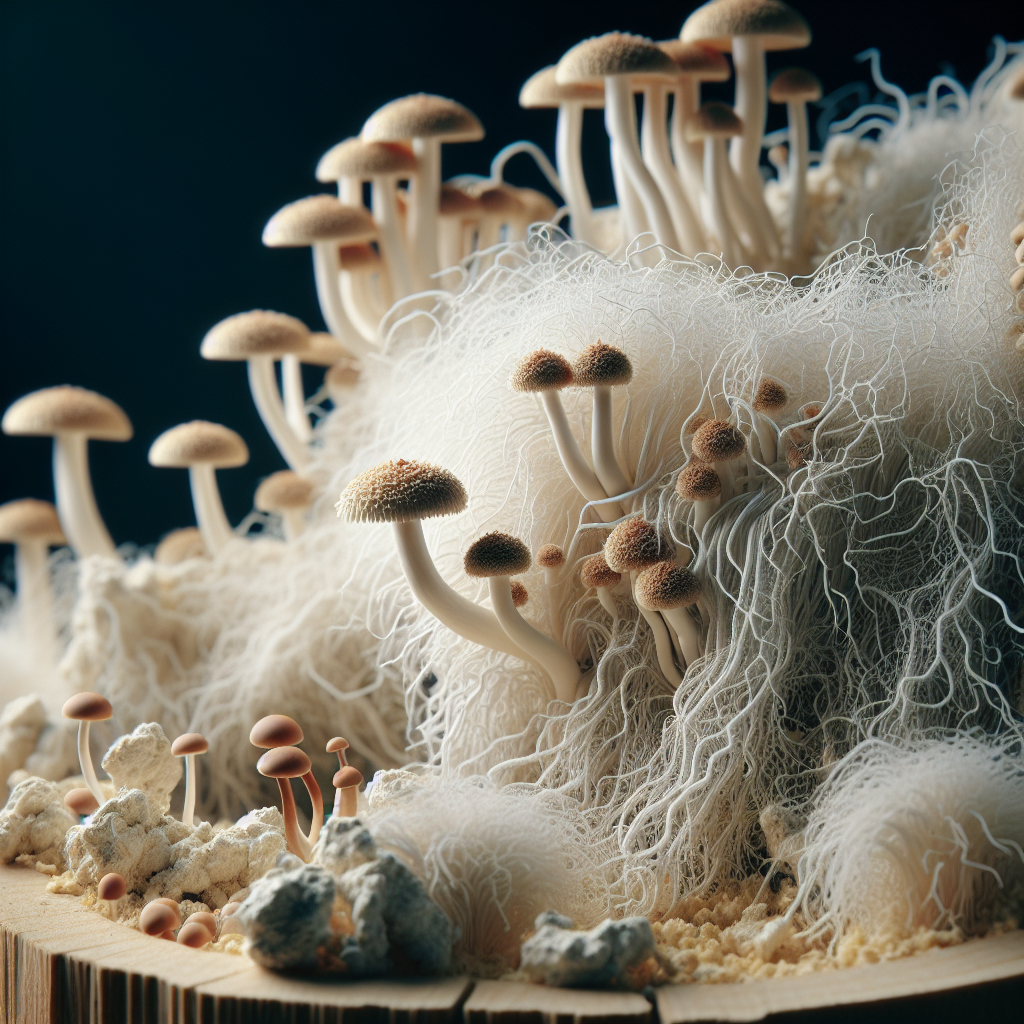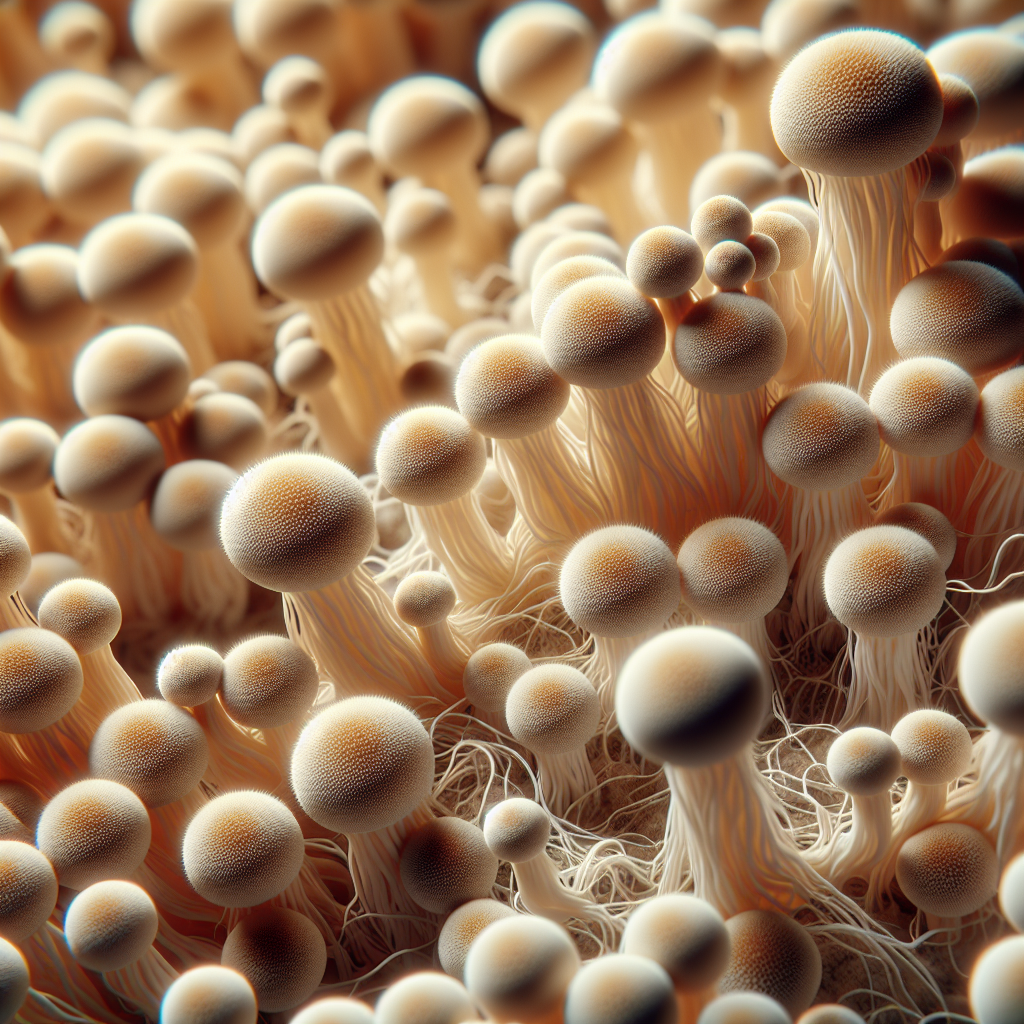Essential expertise that you’ll gain from “The Ultimate Guide to Using 100 Mycelium Kits” includes comprehensive knowledge of mycelium germination and maintenance, from setup to harvest. You will gain proficiency not only in handling mycelium, but in understanding its role in a larger ecological context. Furthermore, this guide will enlighten you about the ethical practices of mushroom cultivation, ensuring sustainable and responsible gardening. This guide is a must-have resource for hobbyist gardeners, environmental enthusiasts, or anyone looking to become a self-sufficient grower of gourmet and medicinal mushrooms.

Understanding the Basics of 100 Mycelium Kits
The world of fungi offers a fascinating array of possibilities, from delectable gourmet dishes to sustainable bio-materials. Central to these functionalities is mycelium, the unseen underground system of branching threads that form the vegetative part of a fungus. Today, this feature takes center stage in 100 Mycelium Kits, DIY packages designed to let you grow your very own your mycelium.
Defining 100 Mycelium Kits
100 Mycelium Kits are comprehensive, user-friendly packages that provide all necessary materials and instructions for you to grow your own mycelium. They come with a sterile substrate fully colonized by mycelium, allowing you to bypass the delicate and intricate process of extraction and cultivation from spores.
Roles and Importance of Mycelium
Mycelium has a range of incredible properties that make it a fascinating focus of study. It plays a critical role in the ecosystem as nature’s recycler, breaking down organic materials into nutrients for plant life. Moreover, its complex, interwoven structure has sparked interest for its potential in sustainable construction and packaging.
Different Types of Mycelium
Mycelium exists in a variety of species, each with their unique characteristics. Some of the most popular include the Reishi, Shiitake, and Lion’s Mane, known for their medicinal properties. Understanding these types can help tailor your cultivation to specific uses, whether for health, cuisine, or materials.
How to Choose the Best 100 Mycelium Kits
Choosing the right mycelium kit requires careful consideration of various parameters such as the brand, customer ratings, and your specific needs.
Parameters for Selecting Mycelium Kits
Key factors to bear in mind include the type of mycelium, ease of use, yield, and the quality of instructions provided. Your choice should align well with your level of expertise, the intended use of the mycelium, and your available resources.
Brand Comparison
Different brands provide various perks, such as a wide range of species, extended shelf life, or comprehensive support. By comparing the benefits and drawbacks of various brands, you can find a kit that suits your specific preferences.
Reviewing Customer Ratings and Feedback
Customer reviews offer a third-party perspective on the effectiveness and usability of a mycelium kit. By assessing ratings and feedback, you can gain insight into the practicality and reliability of a kit before purchase.
Preparation for Using a 100 Mycelium Kit
Preparation is key in maximizing the potential of your 100 Mycelium Kit. This includes organizing your workspace, acquiring necessary tools, and understanding ideal cultivation conditions.
Organizing Your Workspace
The space where you plan to grow your mycelium should be clean, well-lit, and free from draft. Clutter should be minimized, and all the items you need should be within easy reach to streamline the process.
Required Tools and Supplies
In most cases, a 100 Mycelium Kit will include everything you need. However, additional supplies such as a misting spray for maintaining humidity, a thermometer for temperature checking, or protective equipment may be necessary depending on the species and your cultivation setup.
Ideal Conditions for Mycelium Cultivation
Every species of mycelium has its specific “comfort zone” where it grows best. This typically includes a certain temperature and humidity level, alongside adequate lighting and appropriate air circulation. Knowing this can help you tweak your environment to create the best conditions for mycelium growth.

Step-By-Step Usage of 100 Mycelium Kits
100 Mycelium Kits are designed with the user in mind, providing step-by-step instructions for every stage of the cultivation process.
Unboxing the Kit
Upon unboxing the kit, you should verify that all items are accounted for and in good condition. It’s common to find a pre-colonized substrate, a growing bag, and detailed instructions.
Instructions for Inoculation
Inoculation often involves introducing the mycelium to its new home—typically a nutrient-rich substrate enclosed in a grow bag. The kit instructions will guide you through this process, which can vary depending on the type of mycelium and substrate involved.
Maintenance and Monitoring
After inoculation, your role transitions to ensuring the right conditions for mycelium to grow. This includes maintaining the right temperature and humidity, monitoring for any signs of contamination, and making necessary adjustments.
Dealing With Common Problems in Using 100 Mycelium Kits
Despite the ease of using 100 Mycelium Kits, you may encounter challenges. Common issues include contamination, poor mycelium health, and difficulties in maintaining the ideal conditions for growth.
Common Issues and Solutions
Common problems include lack of growth, slow growth, or undesirable colors which often suggest contamination. Often, these issues can be addressed by altering growing conditions such as temperature or aeration or by implementing stringent cleanliness measures.
Dealing With Contamination
In the event of contamination, you may need to discard the compromised segment, or in severe instances, restart the process. Taking preventative measures such as regular cleaning and minimization of direct contact can greatly help in avoiding contamination.
Assessing Mycelium Health
Healthy mycelium appears as fluffy white threads that spread across the substrate. Unusual colors, lackluster growth, or bad smells may indicate poor mycelium health, prompting further investigation and possible interventions.
Maximizing Production With 100 Mycelium Kits
With understanding and practice, you can maximize production with your 100 Mycelium Kits. Re-inoculation, scaling up, and extending the lifespan of the kit can bring forth bountiful results.
Probability of Reinoculation
After harvesting, some mycelium species can be re-inoculated into fresh substrate, offering you another growth cycle. However, this heavily depends on the species and the state of the mycelium after harvest.
Scaling up Mycelium Cultivation
With experience, you may decide to scale up your mycelium cultivation. This might involve using larger kits or multiple kits simultaneously, or even moving to a dedicated growth room if you seek substantial production.
Extending the Lifespan of Mycelium Kits
Proper maintenance and care can prolong the productiveness of your mycelium kit. This could involve strategies such as correct storage of the kit prior to use and post-harvest care.
Understanding the Harvesting Process
Harvesting is an exciting phase where you reap the fruits of your labor. Understanding when and how to harvest, as well as post-harvest handling, leads to a successful crop.
Identifying Harvesting Moments
The right time to harvest depends on your intended use for the mycelium. Generally, it’s advisable to harvest just as or before the mycelium begins to sporulate, signaled by a change in color at the tips of the growth.
Proper Harvesting Techniques
Correct harvesting safeguards the mycelium and its environment. Often this involves gently pulling or cutting the mycelium from the growth substrate, while avoiding contamination of the growing area.
Post-Harvest Handling and Storage
Post-harvest, the mycelium should be properly handled and stored to maintain its quality. This could range from drying for long-term storage to immediate use in recipes or projects.
Various Uses of Mycelium from 100 Mycelium Kits
The applications of mycelium are diverse and steadily growing with advances in biotechnology.
Medicinal Uses of Mycelium
Many mycelium species are rich in bioactive compounds beneficial for human health. For instance, Reishi, Turkey Tail, and Lion’s Mane are commonly used in supplements and teas for their immune-boosting, anti-cancer, and cognitive health properties.
Mycelium in Sustainable Construction
In the realm of sustainable construction, mycelium is emerging as a promising bio-material. The dense, durable network of mycelium threads can be trained to grow around molds and then dried to create sturdy, lightweight, and biodegradable building blocks.
Culinary Uses of Mycelium
In the culinary world, mycelium provides an eco-friendly source of protein. Notable types include the Oyster and Shiitake mushrooms, appreciated for their rich flavors and textures.
Health and Safety Precautions When Using 100 Mycelium Kits
While mycelium cultivation is generally safe, you should take some precautions to ensure a smooth and enjoyable process.
Importance of Sterilization
Maintaining a sterile environment is crucial in mycelium cultivation. This ensures healthy growth free from competitors or harmful contaminants. Tools, surfaces, and even the air can be sterilized using methods like heat, alcohol, or bleach solutions.
Wearing Protective Equipment
Even though mycelium itself is usually harmless, the process might require protective equipment. This can range from gloves and masks to avoid inhaling spores, to appropriate clothing that can be easily cleaned.
Handling Allergies and Reactions
In rare cases, individuals may be allergic to certain types of fungi and experience reactions. Always handle mycelium with care and if you suspect an allergic reaction, stop handling the mycelium and seek medical advice.
Do’s and Don’ts When Using 100 Mycelium Kits
Like many ventures, success with 100 Mycelium Kits can be greatly enhanced by adhering to some simple do’s and don’ts.
Avoiding Common Mistakes
Common mistakes to avoid include over-watering, lack of ventilation, or exposing the mycelium to extreme temperature or light conditions. Remember that less is often more, and patience goes a long way in mycelium cultivation.
Following Instructions Strictly
While experimenting is part of the fun, following the kit’s instructions carefully, especially at the beginning, will boost your chances of success. These guidelines have been designed based on expert knowledge to maximize mycelium growth.
Honing Skills and Experimentation
As you grow more comfortable with the process, you can start testing and applying your own methods. Try different types of mycelium, tweak your growth conditions, or explore new applications for the harvested mycelium. Whether you’re a dedicated mycologist or a curious hobbyist, 100 Mycelium Kits provide a wonderful gateway into the captivating world of fungi. With due preparation, care, and a dash of patience, you can enjoy an enriching and rewarding experience cultivating your own mycelium.
